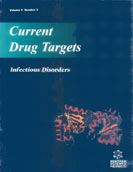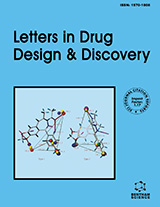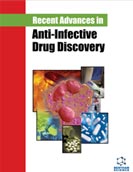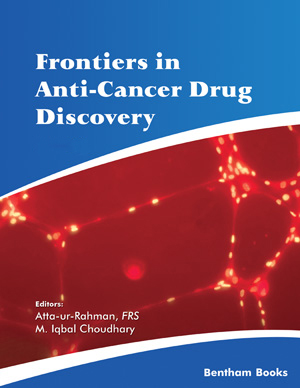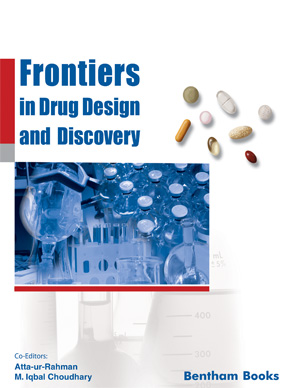Abstract
Non-steroid anti-inflammatory drugs (NSAIDs) are major drugs used in the treatment of inflammation and pain in a wide variety of disorders. NSAIDs constitute a diverse group of chemicals, categorized according to their chemical structures that share the same therapeutic properties. Among the main compounds are aspirin and salicylate, diclofenac and flurbiprofen. The best-known mechanism of action of NSAIDs is the inhibition of prostaglandin synthesis secondary to their action on cyclooxygenases (COXs). However, data have been accumulating through the years indicating that NSAIDs also act on other targets to counteract pain. Their analgesic effects are not necessarily the consequence of their anti-inflammatory action. Administration of NSAIDs reduces cutaneous and corneal pain induced by acidic pH in the absence of inflammation. Tissue acidosis, which is a dominant factor in inflammation, tumors and ischemia, has an important contribution in pain and hyperalgesia. This is due to direct excitation of the nociceptive sensory neurons by protons-gated depolarizing currents. Actually, these neurons bear a major category of ion channels that are sensitive to extracellular pH changes, the acid-sensing ion channels (ASICs). ASIC channels are able to induce action potential triggering on sensory neurons after a moderate extracellular pH decrease. They undergo transcriptional induction and post-translational regulation during inflammation and thus participate in the hypersensitization of the nociceptive system in this physiopathological condition. One specific ASIC isoform is also thought to mediate cardiac ischemic pain. COX-independent direct inhibition of their activity by different NSAIDs has been shown to occur at therapeutic doses of these compounds, on native ASIC currents on sensory neurons, as well as on ASIC channels expressed in heterologous systems. Moreover, NSAIDs also prevent the large inflammation-induced increase of their expression. These two effects are thus proposed to play an important role in the analgesic effects of NSAIDs in addition to their well-known action through COXs, and particularly in case of inflammation.
Keywords: acid sensing Ion channel, acidosis, inflammation, pain
Current Drug Targets - Inflammation & Allergy
Title: Acid-Sensing Ion Channels (ASICs): New Targets for the Analgesic Effects of Non-Steroid Anti-Inflammatory Drugs (NSAIDs)
Volume: 3 Issue: 1
Author(s): Nicolas Voilley
Affiliation:
Keywords: acid sensing Ion channel, acidosis, inflammation, pain
Abstract: Non-steroid anti-inflammatory drugs (NSAIDs) are major drugs used in the treatment of inflammation and pain in a wide variety of disorders. NSAIDs constitute a diverse group of chemicals, categorized according to their chemical structures that share the same therapeutic properties. Among the main compounds are aspirin and salicylate, diclofenac and flurbiprofen. The best-known mechanism of action of NSAIDs is the inhibition of prostaglandin synthesis secondary to their action on cyclooxygenases (COXs). However, data have been accumulating through the years indicating that NSAIDs also act on other targets to counteract pain. Their analgesic effects are not necessarily the consequence of their anti-inflammatory action. Administration of NSAIDs reduces cutaneous and corneal pain induced by acidic pH in the absence of inflammation. Tissue acidosis, which is a dominant factor in inflammation, tumors and ischemia, has an important contribution in pain and hyperalgesia. This is due to direct excitation of the nociceptive sensory neurons by protons-gated depolarizing currents. Actually, these neurons bear a major category of ion channels that are sensitive to extracellular pH changes, the acid-sensing ion channels (ASICs). ASIC channels are able to induce action potential triggering on sensory neurons after a moderate extracellular pH decrease. They undergo transcriptional induction and post-translational regulation during inflammation and thus participate in the hypersensitization of the nociceptive system in this physiopathological condition. One specific ASIC isoform is also thought to mediate cardiac ischemic pain. COX-independent direct inhibition of their activity by different NSAIDs has been shown to occur at therapeutic doses of these compounds, on native ASIC currents on sensory neurons, as well as on ASIC channels expressed in heterologous systems. Moreover, NSAIDs also prevent the large inflammation-induced increase of their expression. These two effects are thus proposed to play an important role in the analgesic effects of NSAIDs in addition to their well-known action through COXs, and particularly in case of inflammation.
Export Options
About this article
Cite this article as:
Voilley Nicolas, Acid-Sensing Ion Channels (ASICs): New Targets for the Analgesic Effects of Non-Steroid Anti-Inflammatory Drugs (NSAIDs), Current Drug Targets - Inflammation & Allergy 2004; 3 (1) . https://dx.doi.org/10.2174/1568010043483980
| DOI https://dx.doi.org/10.2174/1568010043483980 |
Print ISSN 1568-010X |
| Publisher Name Bentham Science Publisher |
Online ISSN 1568-010X |
 42
42Related Articles
-
Filariasis: Current Status, Treatment and Recent Advances in Drug Development
Current Medicinal Chemistry Impact of IL-12 in Cancer
Current Cancer Drug Targets Current Studies of Osteoclastogenesis and Potential Drug Targets
Current Drug Targets Imaging of Cyclooxygenase-2 (COX-2) Expression: Potential Use in Diagnosis and Drug Evaluation
Current Pharmaceutical Design Editorial [Hot Topic: Stress-Induced Deleterious Consequences in the Gastrointestinal Tract. (Guest Editors: Juan C. Leza and Luis Menchen)]
Current Molecular Medicine Molecular and Cellular Mechanisms in the Pathophysiology of Severe Head Injury
Current Pharmaceutical Design Asymmetric Organocatalytic Tandem/Domino Reactions to Access Bioactive Products
Current Organic Chemistry Targeting PPAR Isoforms Following CNS Injury
Current Drug Targets Novel Protein Targeted Therapy of Metastatic Melanoma
Current Pharmaceutical Design Macrophage Activation Syndrome in Childhood Rheumatic Diseases
Current Rheumatology Reviews Effects of Biologic Agents and Other Disease-Modifying Antirheumatic Drugs on Cardiovascular Outcomes in Psoriasis and Psoriatic Arthritis: A Systematic Review
Current Pharmaceutical Design Antiviral Herbs - Present and Future
Infectious Disorders - Drug Targets Beneficial Role of Vitexin and Isovitexin Flavonoids in the Vascular Endothelium and Cardiovascular System
Current Nutraceuticals Inflammasome as a New Therapeutic Target for Diabetic Complications
Recent Patents on Endocrine, Metabolic & Immune Drug Discovery (Discontinued) Adult Stem Cell Transplants for Spinal Cord Injury Repair: Current State in Preclinical Research
Current Stem Cell Research & Therapy Drug Repositioning: A Smart Approach for Combating SARS-CoV-2
Anti-Infective Agents VEGF Inhibitors in Cancer Therapy
Current Pharmaceutical Design Humic Acids as Therapeutic Compounds in Lead Intoxication
Current Clinical Pharmacology Effects of Probiotic Preparations on Inflammatory Cytokines in Chronic Kidney Disease Patients: A Systematic Review and Meta-Analysis
Current Pharmaceutical Biotechnology Possible Exploitation of Non-Neuronal and Non-Chemical Synaptic Signalling Pathways in Epilepsy Therapy
Current Signal Transduction Therapy


